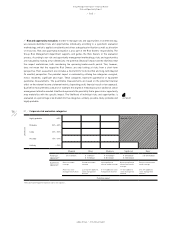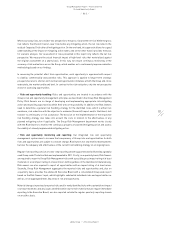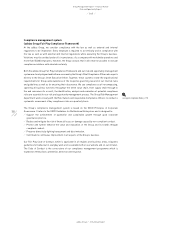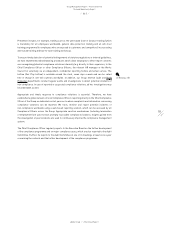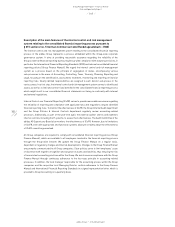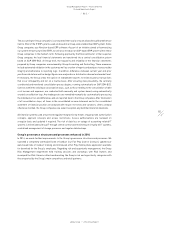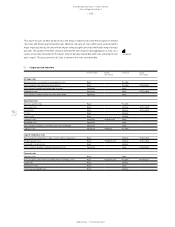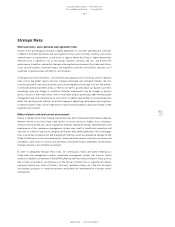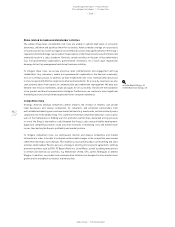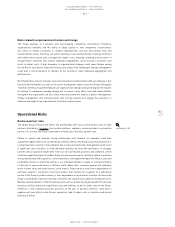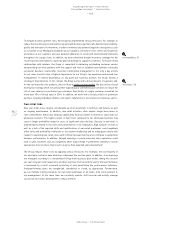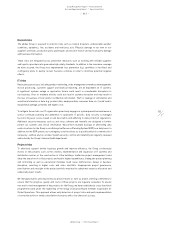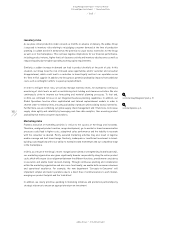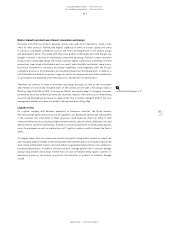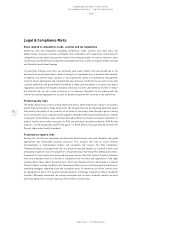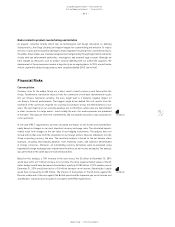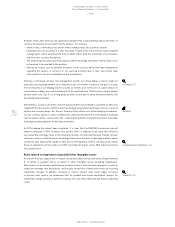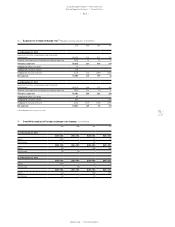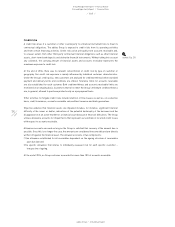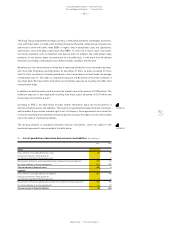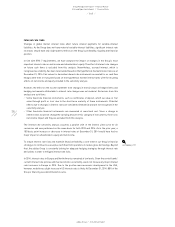Reebok 2014 Annual Report Download - page 170
Download and view the complete annual report
Please find page 170 of the 2014 Reebok annual report below. You can navigate through the pages in the report by either clicking on the pages listed below, or by using the keyword search tool below to find specific information within the annual report.
166
2014
/
03.5
/
adidas Group
/
2014 Annual Report
Group Management Report – Financial Review
Risk and Opportunity Report
/
Operational Risks
To mitigate business partner risks, the Group has implemented various measures. For example, to
reduce the risk of business interruption, we work with business partners who demonstrate reliability,
quality and innovation. Furthermore, in order to minimise any potential negative consequences such
as a violation of our Workplace Standards by our suppliers, we enforce strict control and inspection
procedures at our suppliers and also demand adherence to social and environmental standards
throughout our supply chain. In addition, we have selectively bought insurance coverage for the
risk of business interruptions caused by physical damage to suppliers’ premises. To ensure strong
relationships with retailers, the Group is committed to delivering outstanding customer service
and providing our retail partners with the support and tools to establish and maintain a mutually
successful business relationship. Customer relationship management is not only a key activity
for our sales force but also of highest importance for our Group’s top executives and second-line
management. To reduce dependency on any particular business partner, the Group follows a
strategy of diversification. In this context, the Group works with a broad network of suppliers and,
for the vast majority of its products, does not have a single-sourcing model. We also utilise a broad
distribution strategy which includes further expanding our controlled space activities to reduce the
risk of over-reliance on particular key customers. Specifically, no single customer accounted for
more than 10% of Group sales in 2014. In addition, we work with a broad portfolio of promotion
partners including individual athletes, club teams, federations or associations in numerous sports.
Own-retail risks
New own-retail stores require considerable up-front investment in furniture and fixtures as well
as ongoing maintenance. In addition, own-retail activities often require longer-term lease or
rent commitments. Retail also employs significantly more personnel in relation to sales than our
wholesale business. The higher portion of fixed costs compared to our wholesale business may
cause a larger profitability impact in cases of significant sales declines. Success in own retail is
predominantly related to the skills and performance of our employees. High turnover of staff as
well as a lack of the required skills and qualifications of own-retail employees could negatively
affect sales and profitability. Ineffective or inconsistent leadership and an inadequate culture with
respect to operating own-retail stores with commercial expertise may also contribute to suboptimal
business performance. In addition, delayed openings or poorly executed store operations could
lead to sales shortfalls and also negatively affect brand image. Furthermore, inability to secure
appropriate store locations may result in a worse than expected sales development.
The Group reduces these risks by applying various measures. For example, the vast majority of
our new lease contracts have durations of between five and ten years. In addition, store openings
are managed according to a standardised Group-wide business plan model, taking into account
our year-long own-retail experience and best practices from around the world. Store performance
is measured by a retail scorecard consisting of nine quantitative key performance indicators.
Underperforming stores are reorganised, remodelled or closed, as appropriate. Furthermore,
we run multiple training initiatives for own-retail employees at all levels, from store assistant to
top management. At the same time, we constantly monitor staff turnover and actively manage
succession and career development to reduce attrition.
see Sustainability, p. 89
see Glossary, p. 258


